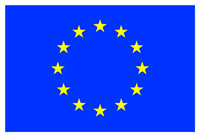WG 5: Prodrugs with novel activation strategies
Working Group Coordinator: Adoracion Gomez Quiroga, University of Madrid (UAM), Spain
Topic: In particular in the context of targeting cancer, it is highly desirable to develop metal-based prodrugs that get activated only at their respective target sites. Compared with standard organic drugs, metal complexes benefit from their ability to undergo reduction and oxidation reactions, often depending on changes of the biological environment. In view of the hypoxic milieu present in tumour tissue, metal-based prodrugs are developed and investigated in which the change of oxidation state of the central metal ion generates the biologically active metallo-drug. In addition, tumours are known to have an acidic environment. Accordingly, this WG deals with the design of prodrugs that are activated by an acidification, e.g. by applying pH-sensitive ligands. Another prominent example for prodrugs being investigated within this WG are metal complexes that become active drugs after irradiation with light. For example, inert (and hence inactive and scarcely toxic) complexes are prepared that, upon irradiation with visible light, rapidly release one or more ligands, thus becoming activated. Another example concerns metallo-porphyrin compounds that exploit the tumour-localizing and light-harvesting ability of the porphyrin ligands. Light absorption from the chromophore is followed by energy transfer to the metal, inducing ligand dissociation and thus selective activation. Complexes activated by light are expected to display reduced side effects in healthy (non-irradiated) tissue. Hence, within this WG, prodrugs based on these (and also on other newly developed) activation strategies are devised, characterized, and developed.

 COST is supported by the EU Framework Programme Horizon 2020
COST is supported by the EU Framework Programme Horizon 2020